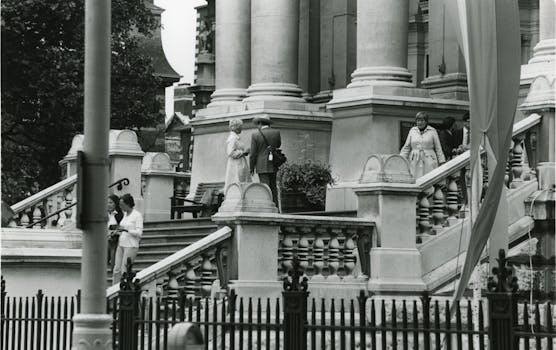
Traveling Through Time: How Europe’s Historical Heritage Shapes Modern Lifestyles in 2025
Traveling Through Time: How Europe’s Historical Heritage Shapes Modern Lifestyles in 2025. Europe, a continent steeped in history and tradition, has a unique ability to blend the old with the new. As we journey through the cities and countryside of Europe, we find that the past continues to shape the present in profound ways. In this article, we’ll explore how Europe’s historical heritage influences modern lifestyles, from the architecture that dominates city skylines to the cuisine that brings people together.
A Brief History of Europe
To understand the significance of Europe’s historical heritage, it’s essential to take a step back and look at the continent’s rich history. From the ancient civilizations of Greece and Rome to the Renaissance and beyond, Europe has been a hotbed of cultural, artistic, and scientific innovation. Each era has left its mark on the continent, shaping the course of human history in meaningful ways.
Today, as we walk through the streets of European cities, we’re surrounded by reminders of the past. Ancient buildings, historic landmarks, and cultural artifacts all serve as testaments to the enduring legacy of Europe’s historical heritage. But the influence of the past extends far beyond the physical landscape. It shapes the way people live, work, and interact with one another, from the food they eat to the festivals they celebrate.
Architecture and Urban Planning
One of the most visible ways in which Europe’s historical heritage shapes modern lifestyles is through architecture and urban planning. Many European cities are characterized by narrow, winding streets and historic buildings that date back centuries. These structures, often beautifully preserved and restored, provide a glimpse into the past while also influencing the way people live and work today.
In cities like Paris, Rome, and Barcelona, the architecture is a testament to the cultural and artistic achievements of bygone eras. The Eiffel Tower, the Colosseum, and La Sagrada Familia are just a few examples of iconic landmarks that draw millions of visitors each year. But these structures are more than just tourist attractions – they’re also an integral part of the urban fabric, shaping the way people move through and interact with the city.
Cuisine and Food Culture
Another area where Europe’s historical heritage has a profound impact on modern lifestyles is cuisine and food culture. European cuisine is renowned for its diversity and richness, with each country and region boasting its own unique culinary traditions. From pasta and pizza in Italy to tapas and paella in Spain, the food is often a reflection of the local culture and history.
In many European countries, mealtimes are still considered sacred, and the tradition of sitting down to a home-cooked meal with family and friends is an essential part of the daily routine. This emphasis on food and commensality is a direct legacy of the past, when meals were often seen as opportunities for socializing and strengthening community bonds.
Festivals and Celebrations
Europe’s historical heritage also shapes modern lifestyles through the numerous festivals and celebrations that take place throughout the year. From the Tomatina festival in Spain to the Carnival of Venice, these events are often rooted in tradition and provide a unique insight into the local culture and history.
In many European countries, festivals and celebrations are an integral part of the social calendar, bringing people together and providing a sense of community and belonging. Whether it’s the Christmas markets in Germany, the Easter celebrations in Greece, or the summer solstice festivities in Stonehenge, these events are a testament to the enduring power of tradition and cultural heritage.
Conclusion
In conclusion, Europe’s historical heritage continues to shape modern lifestyles in profound ways. From architecture and urban planning to cuisine and food culture, festivals and celebrations, the past is ever-present, influencing the way people live, work, and interact with one another. As we look to the future, it’s essential that we preserve and protect this rich cultural heritage, ensuring that the traditions and customs of the past continue to inspire and enrich our lives in the years to come.





